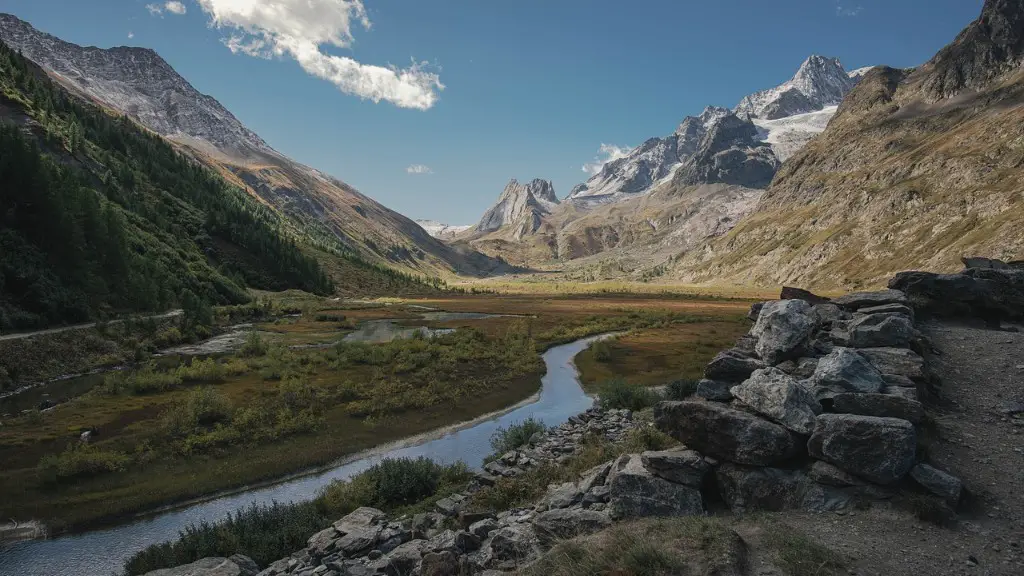Background Information
The Mississippi River is one of the most iconic rivers in the United States. It is often referred to as the “Big Muddy” due to its deep, murky waters, and is a vital part of the nation’s ecosystem. Its 2,350-mile path takes it through the 10 states of Mississippi, Arkansas, Illinois, Wisconsin, Iowa, Louisiana, Wisconsin, Minnesota, Tennessee and Missouri, and serves as a highway for transportation, commerce and recreation. The climate of this great river has a tremendous effect on its travel, uses, and environments along its course. The Mississippi River is considered a sub-tropical system, but is subject to stormy weather, rapid changes in temperature, and seasonal variation.
Regional Influences
The region in which the Mississippi River flows is largely dependent on the climate and weather patterns. In the summertime, large storms form over the Midwest, bringing quick changes in temperature, wildly fluctuating water levels and potentially devastating floods. The winter months in the Upper and Middle Mississippi River regions usually bring cold temperatures, snow and ice and create a need for heavy winter preparation. In the Lower Misssissippi Delta region, the winter months tend to be wetter, milder, and humid, allowing for some outdoor activity during the off season.
Humidity and Precipitation of Mississippi
The area along Mississippi River is characterized by humid and subtropical climates. The humidity levels are quite high throughout the year, averaging about 75% during the summer months and 75-90% during the winter months. Annual precipitation across the basin also tends to be quite high and spring is the wettest season, averaging from 4-6 inches of rainfall each month. The winter months usually experience under 4 inches of precipitation, while summer usually bring no more than 4-5 inches.
Average Temperature
The average temperature along the Mississippi River varies throughout the year, and is dependent on the region. In the Upper and Middle Mississippi River regions, winter temperatures usually average under freezing, while summer usually brings an average of 75-80 degrees Fahrenheit. In the Lower Mississippi River Delta region, temperatures tend to average higher, around 60 degrees during winter and 90 degrees Fahrenheit in the warmer months.
Effects of Climate Change in Mississippi
Climate change has been a major concern for the Mississippi River in recent years. Rising temperatures, increased water levels and shifting weather patterns across the globe have had potential consequences for the river. Warmer temperatures and extreme weather events could bring new challenges for the species that inhabit this area and the animals that utilize the river as a habitat or thoroughfare. Climate scientists also worry about the frequency of floods on the Mississippi, as current models suggest that in the future the river could experience more surge events and bigger rainfall totals. This could lead to stricter regulations on the river’s use and increased protection for the areas within its path.
Environmental Impact
The Mississippi River is home to a great variety of wildlife, plants and ecosystems. These include some of the most important wetlands in the United States, providing habitat for a wide range of creatures and natural resources. The varying weather patterns and temperatures of the Mississippi River could affect these delicate habitats, as well as the migratory patterns of certain species. A gradual shift in temperature could bring new challenges for the delicate ecosystems that are tied to the Mississippi.
Economic Impact
The Mississippi River is a vital waterway for economic purposes, and its climate is also a major factor in the commerce that takes place along its banks. Industries such as fishing, forestry, farming and shipping rely on the weather of the Mississippi, and changes in climate could have a direct impact on these businesses. If temperatures rise or fall too much, the transportation of goods may be decimated. This could lead to financial losses and short-term economic hardship.
Protective Measures to ensure Sustainability
There are many governmental policies and regulations that are in place in order to protect the Mississippi River. These regulations are necessary to ensure that the climate does not severely harm the river’s ecosystems or the communities who rely on it for sustenance. Governmental agencies such as the Environmental Protection Agency, National Park Service and U.S. Fish and Wildlife Service are responsible for regulating the usage and care of the Mississippi River watershed.
Natural Disasters
The Mississippi River is also subject to unexpected natural disasters that can affect its climate. The most common of these disasters are floods, which can be caused by heavy rains and the snowmelt from the winter months. In order to protect people and the environment in the Mississippi River, the US Army Corps of Engineers has numerous dams, levees and other structural barriers, which can prevent the river from flooding.
Environmental Restoration and Conservation
To protect the health of the Mississippi River and its environment, there has been a concerted effort to restore areas near the river. Many organizations and groups are working to protect and restore habitats, revitalize fisheries and remove harmful pollutants from the river’s path. Both governments and the public are joining forces to create conservation strategies that help minimize the effects of climate change, reduce the risk of flooding, and improve the quality of the river’s ecosystems.





